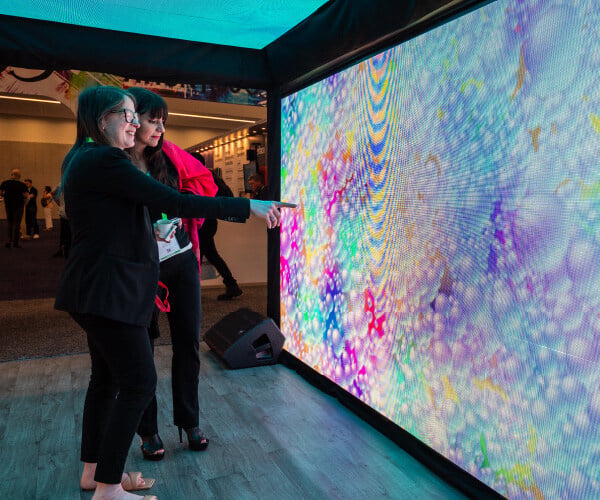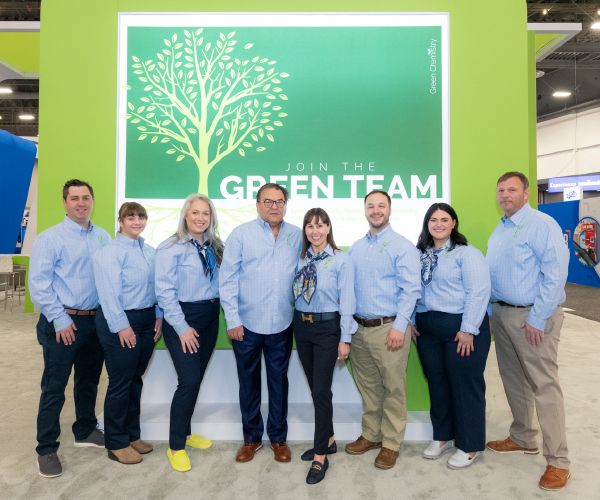
The Innovator’s DNA
January 1, 2014
7 minute Read Is an innovator born or made?
That question prompted authors Hal Gregersen, Clayton Christensen and Jeff Dyer to take on an eight-year study, interviewing hundreds of remarkable CEOs and inventors about their innovation processes. The fascinating finds are published in their book, The Innovator’s DNA: Mastering the Five Skills of Disruptive Innovators. We spoke with Gregersen, professor of innovation at business graduate school INSEAD, to get his take on how to inspire innovation within your company. Here’s our conversation:
CAR WASH Magazine: In the book, you cite five discovery skills used by innovative leaders. How did you narrow the list to these five skills? What makes these five skills so crucial to innovation?
Hal Gregersen: The five skills were generated from a research project that Clayton Christensen, Jeff Dyer and I engaged in more than 10 years ago. We essentially identified disrupted innovators — people who had started businesses that had changed entire industries or created new markets. We interviewed them and asked them what they were doing when they got the initial idea for “X” company. We talked with people like Jeff Bezos at Amazon, Pierre Omidyar who founded eBay, Marc Benioff who founded salesforce.com, as well as some smaller firm owners.
After we interviewed 100 or more of these people, we realized that there are definite patterns and actions these people were taking to generate ideas that actually created value. That’s where the original five skills came from — noticing these patterns of action.
Since then, we’ve created online assessments that look at these five skills. We’ve collected data from roughly 8,000 professionals, managers, executives, entrepreneurs, etc. The stories within those data sets is that anybody, famous or not so famous, if they simply engage these skills frequently in their everyday work and life, will up their probability or chances that they will get, not only new ideas, but ones that create value.
CW: Explain why you believe networking is a key ingredient in developing innovation.
HG: Networking for new ideas and a different way of doing things is a different kind of networking than talking with someone to get resources, financial backing or career opportunities.
Unlike friends who are often quite like us, networking for new ideas is the opposite. We talk to people who are simply not like us. It could be different technical background, different organization, different industry, different generation, different gender, different political perspective, different geography, etc. By talking to someone who has a frame of reference or point of view that is grounded in a very different way of working or living, they can sometimes see things that we are completely oblivious to.
CW: What tips can you offer to those who seek to incorporate the discovery skills into their daily lives?
HG: One of the biggest challenges of becoming an innovator is giving ourselves permission to be an innovator. So many adults are unwilling to raise their hands in affirmation that they are an innovator.
The second part is identifying something that we care enough about to do something about. No matter what the product or service we’re offering, people are hiring it for specific reasons. Once owners of a business or employees forget what people are excited to hire their product or service to do for them, they’ve got problems. There’s disconnect between what they’re doing and what the customer really wants.
It’s really about keeping ourselves open, aware and excited about constantly knowing what is it that people are hiring our product or service to do. Then we have to get out and do it.
Innovators just spend more time, for example, networking for new ideas. They set up breakfasts, lunches, dinners, meeting with people who are not like them to talk about the issue. They might go out and observe their own organization or organizations that do things like them to help them get a new perspective. Or it could be that they just experiment and try different approaches to it in order to make it happen. Observing, networking and experimenting — doing those things and asking the right questions when we do it — helps us unlock some great new insights.
CW: Tell us about the importance of questioning.
HG: What we discovered is that questioning literally turbocharges the other discovery skills. Many leaders stop asking questions because the schools they grew up in taught them to stop asking questions. For example, the average student in the U.S., whether five years old or 18 years old, asks one question per month in an hour-long class. Teachers take over the role of asking 1,000 questions — they ask between 15 and 100 questions per hour. Students in most schools learn that their job is to just give answers. And a lot of organizations hire these people because they are smart and they have bright answers, and they promote them for it. But the people who change the world are the ones who are asking questions about their blind spots. It requires a vigilance and consistency about asking provocative questions that challenge the status quo.
To me, it is like a global questioning crisis. Many managers who want to be in control are often deeply threatened by somebody else asking them a tough question. I’ve got to be willing to ask questions or hear questions that make me uncomfortable. Disruptive questions really poke our emotional buttons because they are pushing at some assumptions about how we do what we do.
CW: How can small business owners inspire innovation within their company?
HG: One option is question burst or question storm. Essentially this is a process of generating nothing but questions about a problem in a short period of time, say 4 minutes. Surprisingly, getting them out of our head and onto paper helps generate better questions and helps us to see the patterns in our questions.
The other question is: What surprises and what’s unexpected in the world around us? A customer may come in and go through the system. As a supervisor, I might turn to someone who is working with me and say at the end of that customer interaction, “What was surprising or unexpected about that experience we just had?”
Constantly asking that simple question alerts us to the fact that either we are not paying any attention or there is something important we need to pay attention to.
Networking is another way. Some companies have people come in and talk to employees at lunch. It could be providing opportunities, time, or just encouraging people to have a problem … and to go talk to someone who is different than them.
Once we start getting ideas, leaders and managers need to create enough space so that people are willing to try out different ways of solving a problem. By definition, new solutions hardly ever work right the first time. Jeff Bezos at Amazon told us that [his] job at Amazon is to reduce the cost of experimentation so that thousands — not hundreds — of experiments happen at this company. They know that if they just try things enough, they will figure out a good solution.
CW: Any final thoughts about this innovation process?
HG: It’s a combination of getting back to the basics of asking better questions, lots of questions, about what’s happening in the world around us, where we’re working, what we’re doing, the people we’re interacting with … combined with having a behavioral alertness — getting out of our offices or workspace and actually talking with somebody different, seeing things that are different, trying something different. Innovation is an active sport. It is not a passive, armchair sport.
A lot of us have the capacity to get new ideas, but we simply don’t take the time to think differently. I often ask people, “Where do you get your best ideas – physically. where are you?” I often hear answers like running, driving the car, taking a shower, etc. So I ask, “When you need new ideas, do you explicitly go there?” Many people just don’t even think to try it.
What about your team? Where do they get new ideas? How often do you go there? We interviewed leaders at Cirque du Soleil. I asked the CEO, “Where do you get the great ideas at Cirque du Soleil?” She said, “Go to the cafeteria.” And in fact, that’s where they happen — because people are bumping into each other to get new ideas. They are encouraged to go there to cross-pollinate and get a new perspective.
The Five Discovery Skills
The Innovator’s DNA lists five skills that distinguish innovative leaders from the rest of the pack:
1. Questioning: Posing queries that challenge common wisdom.
2. Observing: Scrutinizing the behavior of customers, suppliers and competitors to identify new ways of doing things.
3. Networking: Meeting people with different ideas and perspectives.
4. Experimenting: Constructing interactive experiences and provoking unorthodox responses to see what insights emerge.
5.Associating: Drawing connections between questions, problems or ideas from unrelated fields.








